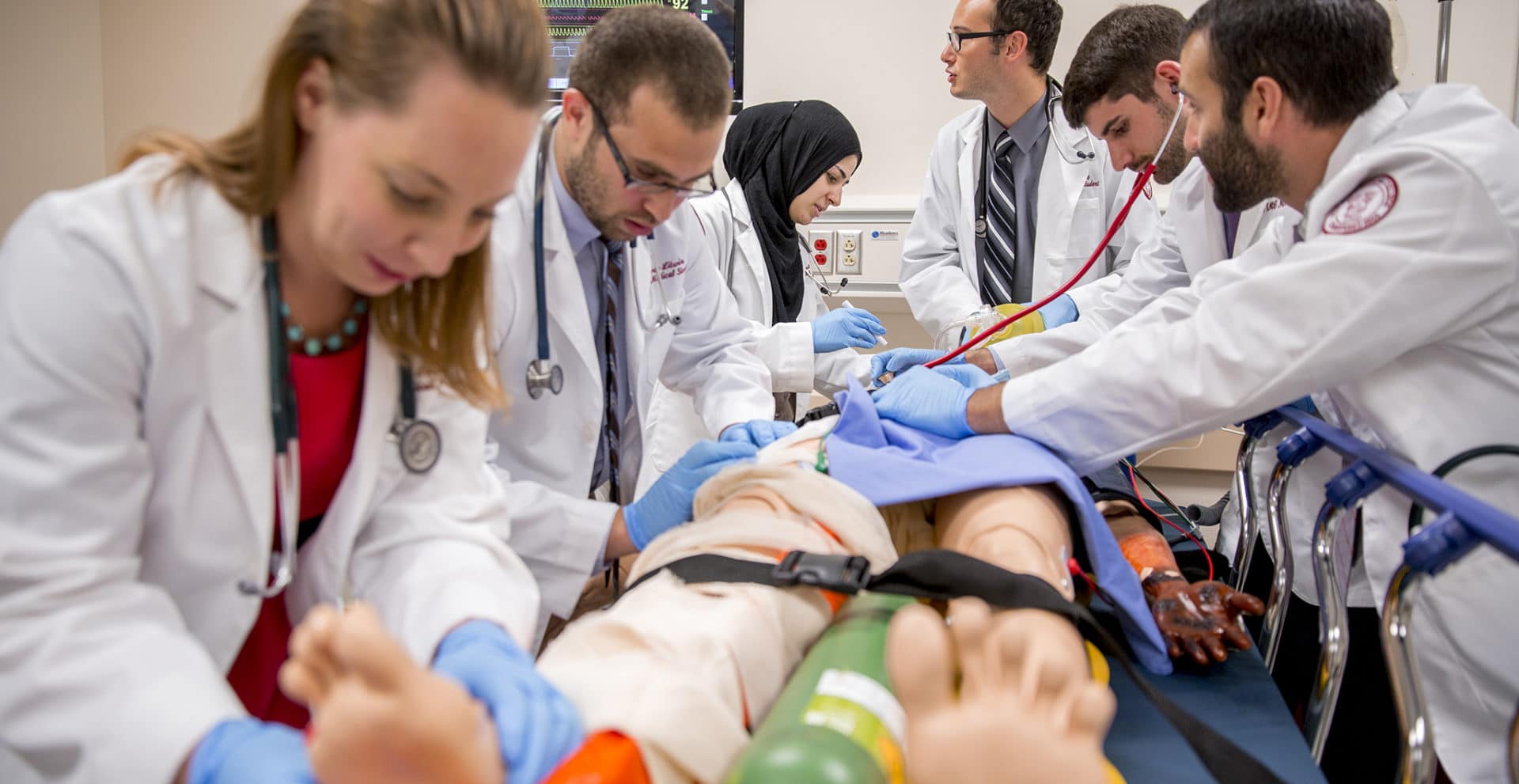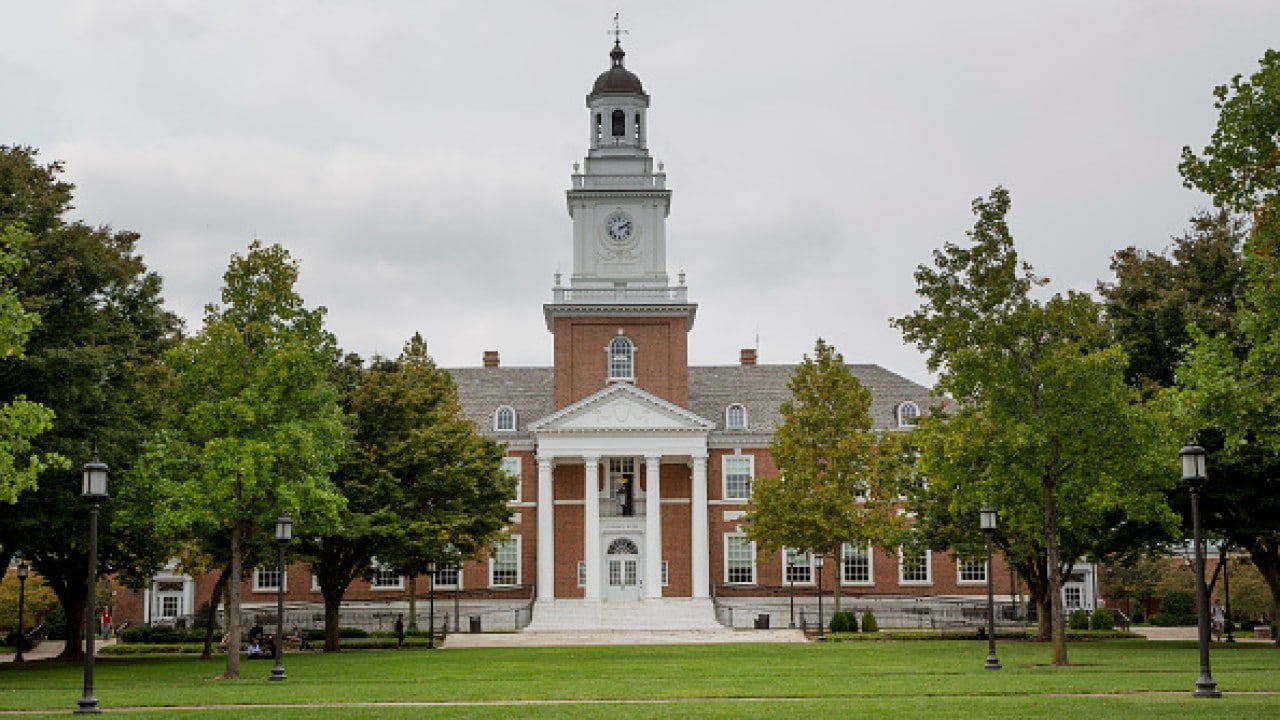Harvard University and the Massachusetts Institute of Technology are the world’s most renowned and prestigious institutions.
They’re consistently known for being at the top of national university rankings and for their top academics, distinguished faculty, and vibrant communities.
If you want to decide between Harvard and MIT, it won’t be easy.
In this article, we’ll review the similarities and differences (Harvard vs. MIT) between these schools to help you determine which is best for you.
This comprehensive guide looks at the quantitative and qualitative differences between Harvard University and the Massachusetts Institute of Technology.
This comparison is especially helpful in understanding the cultural nuances between universities, as it uses student videos to capture these campuses. These videos are exclusively available on World Scholarship Forum Channel.
Before we get to the nitty-gritty, let’s take a general look at what these two schools stand for, their differences, and the factors to consider to help you determine which school is best for you.
Table of contents
- What is Harvard?
- What is MIT?
- How to Decide Between Harvard vs. MIT: Similarities & Differences
- Harvard vs. MIT: Complete Comparison
- MIT vs. Harvard: Best Comparison
- MIT vs. Harvard: Which school is easier to get into?
- Conclusion: Making Your Harvard vs. MIT Decision
- Harvard vs. MIT FAQs
- References
- Recommendation
What is Harvard?
Harvard University is a private Ivy League research university in Cambridge, Massachusetts.
Since its establishment in 1636, Harvard is recognized as the oldest institution of higher learning in the United States and among the most prestigious in the world.
Harvard welcomes students and scholars—wherever they might come from—and empower members of their community to pursue their academic interests wherever those interests may lead.
Harvard has 31,566 students, including 9,950 undergraduate and 21,616 graduate students at Harvard University for the academic year 2018-2019.
By attending status, there are 21,006 full-time and 10,560 part-time students, with a gender distribution of 15,841 male and 15,725 female students.
See a Full Review of Study in Harvard University: Its Tuition fees and Admission Requirements
What is MIT?
The Massachusetts Institute of Technology, often known as MIT, is a private land-grant research university located in Cambridge, Massachusetts.
The institute has an urban campus that extends more than a mile alongside the Charles River.
Founded in 1861, MIT focuses primarily on science, engineering, and technology, with a mission to advance research, discovery, and innovation.
The university is quite small, with an undergraduate enrollment of only 4,361 students and a total enrollment of 11,254 students.
MIT currently employs about 13,000 staff and teachers.
See Full Review on MIT Civil Engineering: Programs, Admission Requirement, Cost, Aids
How to Decide Between Harvard vs. MIT: Similarities & Differences
In order to give a proper comparison, we first stated their similarities and differences before making our complete comparison.
Harvard and MIT have so many similarities.
First, they’re both extremely selective with a 5% (Harvard) and 7% (MIT) acceptance rate, respectively.
In terms of location, they’re both next-door neighbors since they’re located in Cambridge, Massachusetts. The only difference here is their Foci.
Both Harvard and MIT have programs in a wide variety of disciplines. But the major draw for most students to MIT is their STEM programs, which are exclusive to students in technology and engineering.
Meanwhile, students still attend Harvard over MIT to study subjects across STEM because of their high standard of learning.
Harvard is also bigger than MIT, with over 2,000 additional undergraduate students.
Also, Harvard University is an Ivy League school, hence places the university one step ahead of MIT.
While MIT is not an Ivy League school, it is a prestigious school with high national rankings and low selectivity rates comparable to those of Ivy League schools.
Hence, MIT is not an Ivy League school simply because it is not a member of the Ivy League.
However, if athletics is a draw for you, Harvard is probably the better choice. The Crimson play in the Ivy League and NCAA Division I, while the Engineers at MIT participate in Division III.
If you’re deciding between Harvard and MIT, which to choose with the above stated, you might never make a pick.
Because both schools are top-notch in their field.
Yet, if you must choose, check our complete comparison of Harvard vs. MIT below.
Remember that whichever school you attend, you can take some courses like the other.
Harvard vs. MIT: Complete Comparison
The Harvard University campus is located in Cambridge, MA, and is characterized as a city with a population of at least 100,000 but less than 250,000.
While the MIT campus is also located in Cambridge, MA, and is characterized as a medium-sized city with a population of at least 80,000 but less than 200,000.
Also, MIT has a student body of just 4,600, while Harvard has almost 7,000.
Comparing both, the percentage of classes with fewer than 20 students is not comparable with the ones with 25 students: 71% at MIT and 72% at Harvard.
SEE ALSO: 10 Free Masters Degree For International Students In 2024
Now let’s see a significant comparison between the Harvard campus and the MIT campus.
What is the difference between the Harvard University Campus and the MIT Campus?
Location and Weather
Harvard and MIT are both located in Cambridge, just northwest of Boston. They’re both considered part of the significant source of the population for the Boston metropolitan area.
Cambridge has a total population of about 100,000+ people, including several thousand students at Harvard and MIT.
Comparing the weather in both schools, you must know that Cambridge is by the water. So prepare for cold, snowy, windy winters.
However, summer is quite pleasant, and you can enjoy boat rides, waterfront dining, and jogging by the Charles River.
Meanwhile, MIT is slightly closer to downtown Boston and has a better view of the city skyline.
Its campus feels more urban and integrated with the city, while Havard’s campus feels more suburban and self-contained.
University Type
Although MIT and Harvard are private universities, neither of which is publicly funded, Harvard is one of the eight members of the Ivy League, while MIT is not.
That doesn’t necessarily mean anything in terms of prestige – many non-Ivies schools are as prestigious, if not more than Ivies.
For example, MIT is a highly reputable school, even without that ivy label!
Here’s the complete list of Ivy League schools for reference
Rankings and Grades
As mentioned earlier, Harvard is a member of the Ivy League, unlike MIT.
Although Harvard is a member of the Ivy League and MIT is not, the two schools are side by side regarding college rankings.
These days, Harvard barely beats MIT on most lists.
The rankings fluctuate slightly from year to year, so expect Harvard to beat MIT in some years and MIT in others.
Here are Harvard’s current rankings versus MIT based on significant publications and websites:
| US News | Forbes | Niche | Times Higher Education | |
| MIT | 4 | 4 | 1 | 5 |
| Harvard | 2 | 1 | 2 | 3 |
The rankings between Harvard University and MIT are incredibly close.
Hence, you cannot say that a school is “better” based solely on the rankings.
In addition to national rankings, we looked at niche ratings, and grades (A + to F) given by actual college students.
Unsurprisingly, Harvard and MIT achieved A + ratings thanks to their high-quality academics, excellent professors, and active social activities.
How does Harvard University academics compare to MIT?
As we look at the academics between Harvard University and the Massachusetts Institute of Technology, we will understand what current students study and where they end up after graduation.
After all, college should prepare you for a career.
Analyzing each school’s results is helpful in understanding the value of the degree programs.
Let’s start with their significant programs.
Academic Programs
Both Harvard and MIT are known for their excellent academic programs.
However, MIT has a more scientific and technological focus, and Harvard has a more liberal arts focus.
Both schools offer more than 50 majors in various fields, and you can also create your study program that meets a specific and challenging academic goal.
Meanwhile, the most popular majors at MIT are Science, Engineering, and Technology, including Computer Science, Biology, and Mathematics.
At Harvard, the most popular majors cover a slightly more comprehensive range of fields, such as history, economics, and social science.
All MIT students apply to the school without declaring. The institution is divided into five schools:
- School of Architecture and Planning
- School of Engineering
- MIT Sloan School of Management
- School of Humanities, Arts, and Social Sciences
- School of Science
While Harvard University consists of 13 schools as well as one specialized institute, namely Harvard:
- Business School
- Harvard College
- Divinity School
- Division of Continuing Education
- Graduate School of Arts & Sciences
- Graduate School of Design
- John A. Paulson School of Engineering and Applied Sciences
- Graduate School of Education
- Kennedy School
- Law School
- Medical School
- School of Dental Medicine
- T.H. Chan School of Public Health
- Radcliffe Institute for Advanced Study
For clarity’s sake, Harvard College is the undergraduate college of Harvard University, so when people talk about applying to Harvard as a freshman, they’re talking about applying for a college located on the Cambridge Campus.
In addition, the institution is famous for its STEM programs, but there are many other important disciplines such as theater arts, music, political science, women, and gender studies and writing.
SEE ALSO: 10 Best Skating Schools in USA | 2024 Rankings
Also, in both schools, all students must meet certain conditions, including introductory science courses; subjects of humanities, arts, and social sciences; intensive communication courses; and physical education.
Finally, both Harvard and MIT allow cross-registration with each other, as do several other Boston-area colleges and universities.
Admissions
The Harvard and MIT acceptance rates are meager – 5% and 7%, respectively.
Two of the most complex universities to get into are MIT and Harvard, so you will need a great application to increase your chances of being accepted.
But what exactly makes a good MIT or Harvard application? To understand this, you will need to look at the academic profile of the admitted applicants.
While MIT students have a 4.17 GPA in high school, Harvard students have a 4.18 GPA; this shows that you will need to have very high grades (most or all As) to enter MIT or Harvard.
In terms of standardized test scores, MIT students have slightly higher averages, with an SAT score of 1535 and an ACT score of 35, compared to Harvard’s standards of 1520 and 34.
These slight differences are generally nominal, meaning that the two schools are extremely difficult to access.
Student-Faculty Ratio
The student-teacher ratio indicates the number of students per teacher.
Lower ratios are the best, as it means you will receive more personalized attention from your teachers.
Both MIT and Harvard have an excellent student-to-faculty ratio, but the ratio at MIT is even better at 3:1, and Harvard’s is 6:1.
This shows one faculty member for every three students at MIT.
Tuition and Fees
Tuition and fees are similar to Harvard and MIT.
Harvard’s tuition and fees are $52,962 per year, while MIT’s are slightly more expensive at $53,790 per year.
However, both colleges offer great financial Aid, so you probably won’t have to pay much to attend.
Harvard University provides $48,524, while MIT provides an average of $41,198.
At Harvard, students don’t have to pay tuition or fees if their family earns less than $65,000 a year.
Meanwhile, you don’t have to pay anything at MIT if your family makes less than $90,000.
Which school gives more Financial Aid?
At first glance, MIT and Harvard are expensive, with tuition fees of more than $70,000 a year.
But remember that most students receive some form of financial Aid at each school.
While none of the schools offer scholarships (scholarships are based on need only), MIT and Harvard meet 100% of the demonstrated need and are need-blind.
One difference is that Harvard has no loans, while MIT has no loans for families with incomes below $90,000 per year.
Harvard also claims that families earning between $65,000 and $150,000 can expect to pay only 0-10% of their income.
Overall, you can expect Harvard financial aid to be more generous.
Harvard University provides $48,524, whereas MIT offers an average of $41,198.
At Niche, both schools received an A + for student life and an A for the party scene, so you are sure to have an active social life regardless of which of these colleges you attend.
It’s hard to understand the nuances of social life with data alone.
That is why we have featured videos of real students to show how the social life at Harvard University is different from MIT.
Sports and Extracurricular Activities:
Regarding sports, MIT is part of Division III of the NCAA, while Harvard is part of Division I of the NCAA.
All 43 Harvard Crimson teams play in the Ivy League and NCAA Division I, while the 33 MIT Engineers teams play in the NCAA Division III.
Also, MIT has 31 Greek organizations. Meanwhile, Harvard does not officially recognize Greek life, but some fraternities and sororities exist “unofficially” off-campus.
Additionally, MIT and Harvard offer a wide variety of more than 450 student clubs that you can join.
MIT is home to groups like the Solar Electric Vehicle Team, the Art Students Association, the Field Trip Club, and more.
Harvard’s activities span gender and sexuality, from music to politics.
Many Harvard students choose to study abroad in countries around the world.
At MIT, students can also participate in exchange programs with international students.
Culture and Diversity
The table below helps demonstrate the student body differences between Harvard and MIT:
| Harvard University (%) | MIT (%) | |
| White | 43.99 | 36.57 |
| Hispanic | 10.23 | 15.24 |
| Black | 6.44 | 5.68 |
| Foreign | 11.07 | 9.75 |
| Others | 28.3 | 32.8 |
The composition of MIT undergraduate students for the 2019-2020 academic year was 51% of US minority groups. Ten percent of undergraduate students are from countries or territories outside the United States.
SEE ALSO: Best Universities In Peru For International Students 2024 | ranking
Both schools provide resources and programs for their LGBTQ + students.
For example, the BLGTQ Office of Student Life at Harvard has student tutors and supervisors who offer advice on issues of identity and LGBTQ +.
MIT also offers LBGTQ + services with support, scheduling, and more. Both institutions have houses integrated by gender.
How do Harvard University dorms compare to housing options at MIT?
Both colleges offer campus living options.
Harvard University charges for life on campus, while MIT charges for on-campus living.
Most importantly, watch the video below to see a sample of dorm tours at each school.
Housing
More than 97% of Harvard University students live on campus.
As freshmen, students are placed in shared suites near Harvard Yards. When they become sophomores, they reside in one of 12 houses that serve as communities and dormitories, allowing students to form friendships.
Meanwhile, about 73% of MIT college students live on campus, while others live in MIT-approved fraternities, sororities, and independent living groups.
Faculty families live and serve as house leaders in each residence, serving as support systems and facilitators.
Meanwhile, resident student governments are responsible for organizing social, sporting, and intellectual programs.
Median Starting Salary of Alumni
The median starting salary for MIT students is much higher than for Harvard students.
While MIT alums can expect to earn $82,300 right after graduation, an exceptionally high starting salary, Harvard alums can expect to earn around $69,000, or $13,000 less. This is still a solid salary but less high than MIT).
| Harvard | MIT | |
| Location | Cambridge, MA | Cambridge, MA |
| Public or Private? | Private | Private |
| Part of Ivy League? | Yes | No |
| Undergrad Enrollment | 6,699 | 4,361 |
| US News Ranking | 2 | 4 |
| Niche Grade | A+ | A+ |
| Acceptance Rate | 5% | 7% |
| Average GPA | 4.18 | 4.17 |
| Avg SAT/ACT Score |
SAT: 1520 ACT: 34 |
SAT: 1535 ACT: 35 |
| Tuition & Fees | $52,962 | $53,790 |
| Financial Aid | $48,524 | $41,198 |
| Student-Faculty Ratio | 6:1 | 3:1 |
| # of Schools/Colleges | 13 + 1 institute | 6 |
| # of Majors | 50 | 56 |
| Most Popular Majors | Economics, history, biology | Engineering, comp sci, math |
| # of Student Clubs | 450+ | 450+ |
| Sports | NCAA Division I | NCAA Division III |
| Med Starting Salary | $69,000 | $82,300 |
| Overall Reputation | World-renowned research university famed for its academics, professors, and award-winning alumni and for also having one of the biggest academic libraries in the world | One of the most highly regarded science and technology universities in the world, known for its academics, scientific discoveries, and research |
MIT vs. Harvard: Best Comparison
Below is a side-by-side comparison of Harvard University vs. MIT to better understand how these two prestigious universities differ.
World-renowned research university famed for its academics, professors, and award-winning alums, and for also having one of the most significant academic libraries in the world One of the most highly regarded science and technology universities in the world; known for its academics, scientific discoveries, and research
MIT vs. Harvard: Which school is easier to get into?
We’ve compared location and weather, admissions, sports, extracurricular activities, and more to compare Harvard University and MIT comprehensively.
Because if you look at the acceptance rate, then Harvard University is harder to get into.
However, each college seeks to fill its incoming class with various students with strengths, backgrounds, etc.
But you are smart enough to know that the numbers paint a terrible picture to understand what each university and community is like. And the honest answer to knowing which school is the best is the right school for you.
Therefore, more than the acceptance rate alone is needed to indicate that Harvard University is a better school or that it is more difficult for you to enter.
On the other hand, the Massachusetts Institute of Technology is easier to access based solely on the acceptance rate.
So, it doesn’t matter who you ask. If they know what they’re talking about, the answer is the same: the “best” school is the one you choose.
Viewing each school’s videos on World Scholarship Forum is vital.
Conclusion: Making Your Harvard vs. MIT Decision
In determining whether Harvard or MIT is better for you, you will need to consider several factors, such as student body size, costs and financial Aid, available college programs, and types of students generally admitted.
When you start applying for college, whether it’s Harvard, MIT, or both, ensure you have enough time to prepare your best application.
Harvard vs. MIT FAQs
The US News and World Report consistently put Harvard University at the top of its annual ranking of national universities. Still, the Massachusetts Institute of Technology students may be more intelligent than their counterparts up the river. MIT took the top order, followed by Harvard.
Harvard takes more work based on acceptance rates and the ratio of applicants to admitted students. Harvard receives twice as many applicants as MIT.
MIT also has a solid international reputation for social sciences and business-related courses. These strengths are reflected in the QS World University Rankings by Subject 2020, based on academic reputation, employer reputation, and research citations.
Most graduates from Harvard have very successful careers in the sciences, business, or politics. This success is partly the result of an extensive network of high-profile contacts developed during my student days at this university. This is why Harvard has gained a reputation as the university of the elite class.
References
- blog.prepscholar.com – MIT vs. Harvard: Which Is Better?
- blog.collegevine.com – MIT vs. Harvard: Which College is Right for You?
- campusreel.org – Harvard University vs. Massachusetts Institute of Technology Overview
Recommendation
- Harvard University Scholarships Opportunities |UPDATED
- Fully Funded Scholarships at Harvard University
- Free Online Courses at Harvard University for All Students
- MIT Scholarships Opportunities [UPDATED]
- Massachusetts Institute of Technology (MIT) Scholarships
- MIT Civil Engineering: Programs, Admission Requirement





